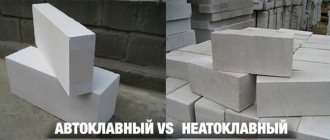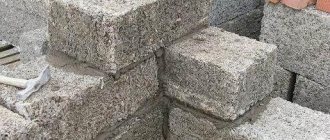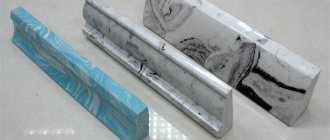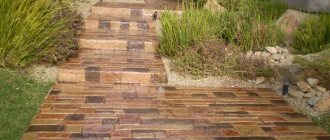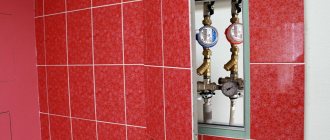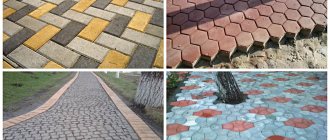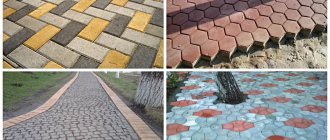Finishing materials make our home comfortable and aesthetically pleasing. The development of technologies in this area of construction and repair has created unique samples of products that make it possible to easily solve complex and previously labor-intensive tasks. Now there is no need to thoroughly level the surfaces before installing the finishing, even if natural stone is used in the design of the room or in exterior work.
Flexible marble, sandstone or even granite are now thin, light, bendable finishing materials. The flexible stone retained the beauty of the natural material, but was no longer bulky, heavy and expensive.
What is flexible marble?
Any flexible stone, including marble, is easily glued to any curved surface. It is easy for them to veneer columns, balls, arches and even walls with minor defects. The material consists of marble sand, a thin polymer base and several other components (different manufacturers have their own secrets). Available in the form of plates, tiles, wallpaper. Like any natural-based material, marble is flexible and has advantages and disadvantages.
Flexible stone based on plastisol
Any technology for producing flexible stone has its drawbacks, but they are more than compensated for by the beauty and ease of use of this type of finish.
About 5 years ago, for our own needs, we produced a small batch of flexible stone based on plastisol. This is the kind of plastic that is applied to work gloves and clothing to prevent slipping; it is also used to make toys, keychains, etc. Its polymerization occurs under the influence of moderate temperature (from 105°C to 150°C) depending on the brand.
The order was like this:
- thick plastisol was applied to the glass with a layer of approximately 3 mm;
- put a fine-mesh plastic plaster mesh on it;
- covered everything with an even, not thick layer of marble chips in excess and lightly rolled it with a roller;
- placed in an electric oven for 15 minutes;
- took it out, let it cool, shook off the excess crumbs, carefully removed it from the glass, and repeated the procedure many times.
The result was great, but quite labor-intensive. Although you can try for yourself.
To the above we cannot help but add a couple of interesting things related to flexible stone. If you use finely crushed brick instead of sand or crumbs, and at the final stage add a couple of inclusions of another material for authenticity, you can get another interesting product.
And if you use flexible stone in translucent structures with internal lighting, you can get an incomparable effect.
In general, we must tell you that flexible stone, with the current abundance of available polymer materials, has become a type of finishing that is quite easy to make with your own hands and the execution options of which are simple and inexpensive to experiment with, as evidenced by this article and the work carried out during its writing.
While it was taking shape, another interesting idea arose on this topic, but it requires verification. Or maybe it happened to you too? Would you mind sharing with us?
We recommend other articles on the topic
Self-construction of a monolithic floor - construction stages
Reinforcement of aerated concrete walls - how to reinforce and with what, laying technology
Arrangement of wooden floors between floors - do-it-yourself implementation
What is a pylon? - in construction and more
Advantages and disadvantages
Any material has properties and qualities that make it unique. The positives relate to the ease of installation and operation, while the disadvantages are often minor. Natural stone has always evoked only positive emotions; marble has always received the most flattering reviews. The flexible analogue of this stone receives no less rave reviews.
The advantages include:
- environmental friendliness;
- ease of installation: attaches to flat and curved surfaces without special preparation;
- resistant to aggressive external environment;
- fire and moisture resistant;
- has low weight;
- has a lower cost compared to natural stone slabs;
Disadvantages include complaints not about its qualities, but rather about insufficient familiarity with the material. There are not enough construction and finishing companies familiar with the material and the nuances of working with it. This fact makes finishing work still expensive. On the other hand, curiosity and the desire to establish production pushes many to make flexible marble with their own hands.
Flexible stone: the beginning
Before flexible marble appeared, a German company in 2009 first proposed an innovative material - flexible stone. Production consists of several stages of preparing natural rock for further cutting of a thin layer of sandstone.
The material turned out to be very interesting in quality, easy to install and durable in use. But due to the expensive production technology, the cost of flexible analogues is higher than the cost of natural sandstone. In addition, the variety of colors, like almost any natural stone, was very small. This material is in demand, but its cost is quite high, which is not affordable for everyone, especially when it comes to the external cladding of a building. To diversify the range and make the material more accessible, flexible marble was invented.
Areas of application of flexible stone
This new product has already gained its fans among finishing craftsmen. The most common options for its use are:
- Fireplace . This decoration material can be used to “decorate” real indoor fireplaces, and especially their electric counterparts. It has been proven that this “like stone” is not afraid of either high temperatures or temperature changes.
- Kitchen. In this part of the apartment, it is appropriate to decorate the entire “working area” with flexible stone. The material, as mentioned above, tolerates temperature changes well, as well as exposure to steam and humidity, and caring for it does not require much effort.
- Arches and columns . Natural stone in finishing such structures is not always convenient due to its weight and inability to take on rounded shapes. And flexible stone is ideal for such a case: it has a completely natural appearance, plus it is light in weight and in giving the desired shape, easy to install and easy to maintain.
- Living spaces . The material is completely safe, and you can easily decorate bedrooms and children’s rooms with it. It can look especially interesting in the hallway, hall, or living room, naturally, if the rest of the interior is designed in the same style.
- Partial decorative finishing . Finishing specialists often offer real works of fresco art, where the material is flexible stone. They will look interesting, say, in the hallway, bathroom or loggia. Such partial finishes can highlight panels or doorways, wall fragments in the apartment itself.
Flexible marble for everyone
The production of flexible marble today is becoming widespread, while the cost of the finishing material is becoming more competitive, and therefore accessible to a wide range of consumers.
The technology is based on the use of available materials; the main question is only the correct use of them and compliance with the exact sequence of process steps. Many have set their sights on producing flexible marble at home for their own needs.
The experiment was not unsuccessful, and several discoveries were made that added variety to the technological process and made it possible to obtain flexible marble of a wide variety of shades, including those that are not found in nature.
General technology: materials, tools
The main technological process occurs in several stages. For production you will need materials and tools:
- well ventilated spacious room. There should be enough space to accommodate several pallets of material ready for drying;
- marble dust or finely sifted sand;
- dyes. The best performance is found in powdered metal oxides. The particle size of powder dyes coincides with marble dust (quartz sand) and therefore easily mixes into a homogeneous mass. Color: from natural to fantastic shades (green, purple, crimson, etc.);
- binder polymer: acrylic latex;
- flexible substrate. Dense polyethylene and fiberglass have proven themselves well;
- rigid sheets for drying finished products, for example OSB sheets with bars filled on all sides with a height of about 50 mm;
- several containers for mixing ingredients.
Making marble: method No. 1
In the first step, mix the dry parts. If you plan to create marble, then mix sand with different dyes in different containers. Marble has veins, their pattern is achieved by using several shades of the same color in a basic base. Having decided on the color and prepared the dry mixtures, you can begin preparing the bases for flexible marble.
The technology involves a dense thin base; polyethylene film, fiberglass or fabric impregnated with water-repellent compounds are suitable. Spread the film on a hard, flat, horizontal surface and cover it with a thin layer of acrylic latex. To make flexible marble with your own hands of high quality and durability, without waiting for the surface to dry, start “painting” the stone with dry mixtures. Once the entire area is filled without gaps, press the sand onto the base. You can use a sheet of glass, a rolling pin, etc. Leave the product to dry, this usually takes about a day. If you are making several sheets, they can be stacked on top of each other; the necessary gap between the plates will be provided by the padded strips. Hair dryers and electric fans will help speed up the production of flexible marble.
How to make it yourself
The production of flexible marble stone is impossible without the following materials and tools:
- marble dust and well-sifted sand;
- dyes. Powdered metal oxides work well. They are the same size as quartz sand, so they are easy to mix into a homogeneous mass;
- flexible substrate. Flexible polyethylene and fiberglass are suitable;
- hard sheets on which finished products will be dried;
- several containers. The components will be mixed in them.
There are two technologies for producing flexible marble with your own hands:
- First way . Sand and dyes are mixed in different containers. To get veins on the stone, choose a primary color and combine several other shades in it. After this, a base is prepared from polyethylene or fiberglass. You can also take a fabric and impregnate it with water-repellent compounds. It is spread out on a flat surface and covered with a small layer of acrylic latex. You can achieve stability of the material if you do not wait for the surface to dry, but immediately apply patterns. When the entire area is filled, it is pressed to the base with a sheet of glass or a rolling pin. The workpiece is left to dry for a day. To speed up production, fans and hair dryers are used.
- Second way . Making flexible marble using this method involves using the same materials and tools, but adding sheet glass and a glass tube with a bell to the list. First, prepare dry mixtures and a substrate, which is secured to the pallet with double-sided tape. Planks are nailed along the edges and glass is placed on them, secured with mounting tape. The structure is placed vertically and sand is poured into the tube, making a design so that it looks like natural stone. When the material is completely dry, it can be used for cladding.
Making marble: method No. 2
There is another interesting way to make a flexible finishing material with imitation marble. The same materials and tools will be required. To the above list, add sheet glass of the same size as the prepared pallets, and a glass tube with a socket. Prepare dry mixtures and substrate. Secure the substrate with the applied latex layer to the pallet with double-sided tape. Place glass on the strips nailed along the edges and secure it with mounting tape or tape. Place the structure vertically.
Using a glass tube with a socket, pour sand into the gap between the base and the glass, creating a pattern that imitates the pattern of natural stone. Making flexible marble using this form of material allows you to more carefully control the process and obtain an authentic design.
The production of flexible marble in sheets can be considered complete after the prepared material has completely dried. To further secure the materials to the substrate and give a noble matte shine to the final product, cover everything with matte acrylic varnish, so you get almost real flexible marble. The production technology is not too complicated, but it requires skill and artistic taste.
Flexible marble is a worthy replacement for natural stone
Translated from Greek, marble is a shiny or white stone. Chemically, it is the closest relative of limestone, with inclusions of dolomite. But how strikingly different they are!
Inclusions of iron compounds color marble in various colors. For example, depending on the amount of iron oxide, the color may be pink or red. Iron sulfide gives it a bluish-black color. By choosing the right color of marble, designers create the necessary ambience, giving individuality to the interior.
What qualities should an artificial analogue have in order to preserve the advantages of a natural material?!
What is flexible marble
Flexible marble is a product of new technology. In which natural marble chips are applied to a thin flexible plate that can take any shape. During production, the crumbs are covered with a durable protective layer on top.
The result is a lightweight finishing material that is in no way inferior in strength to its natural counterpart. Acrylic binders for marble chips are non-flammable, non-toxic, completely safe, and odorless.
Flexible marble: advantages
Even a non-professional can handle laying flexible marble. Because laying it, unlike ceramic tiles, does not require professional skills. The work resembles a wallpaper sticker. Glue is applied to the pre-primed wall and the plate is glued, leveling it with a roller. Plates or sheets of flexible marble are glued end to end to create a seamless surface.
Not only internal, but also external walls and surfaces can be finished with flexible marble. They can simply decorate rounded and geometric designs.
Flexible marble allows you to create unique, inimitable and luxurious interiors.
The material is wear-resistant and resistant to mechanical damage. Heat and moisture resistant, but at the same time, vapor permeable. Therefore, the walls will “breathe”.
Flexible marble is flexible and malleable and does not require heat. But it allows finishing round and rounded surfaces, elements of any configuration.
Excellent for exterior decoration because it is UV resistant.
It will help you realize any design ideas, because it is available in a rich palette of colors and textures.
The undoubted advantage of the material for finishing “damp” rooms is that neither fungi nor bacteria take root on natural stone.
Easy to maintain and durable: manufacturers claim a service life of 25-30 years.
Application area
Flexible marble can be used in finishing not only interiors, but also the facade of the house.
Application in interior design
You can decorate the walls of living rooms, corridors, and hallways with flexible stone. When finishing the kitchen, you can make a marble “apron”, countertop, and dining table.
The moisture resistance and strength of the material allows the use of flexible marble in the decoration of bathrooms and toilets. And not only on the walls, but also on the floors.
In the interior of the rooms, you can make an accent wall by covering it with flexible marble.
Special chic: apply a fresco onto flexible stone using UV printing.
Marble can be used to decorate not only doorways and false fireplaces, but also the fireplace areas of real fireplaces. Because it is heat-resistant, not afraid of high temperatures and is not flammable.
Application in facade finishing
Flexible marble can easily compete with conventional façade finishing materials. For example, bark beetle plaster, Bayramix, decorative siding.
Application
Producing flexible marble using an artisanal method allows you to independently achieve the desired effect. It is not difficult for a craftsman to obtain finishing material in the required quantity. The main task is to mount it correctly on surfaces. For external work, stone adhesives or tile adhesives are used for sheet flexible marble; the surface must first be primed with an acrylic primer in two layers for better adhesion.
For interior work, primer and tile adhesive are also used. The glue should be applied with a notched trowel, after which the finishing material is applied to the surface and pressed tightly. Additionally, for better adhesion, carefully roll over the entire surface with a rubber roller.
The production of flexible stone in industrial and domestic settings requires good preparation and careful adherence to the process. If you don’t feel strong enough to create a pattern identical to that of marble, create fancy stone or sandstone; it has a simple pattern that is easy to repeat.
